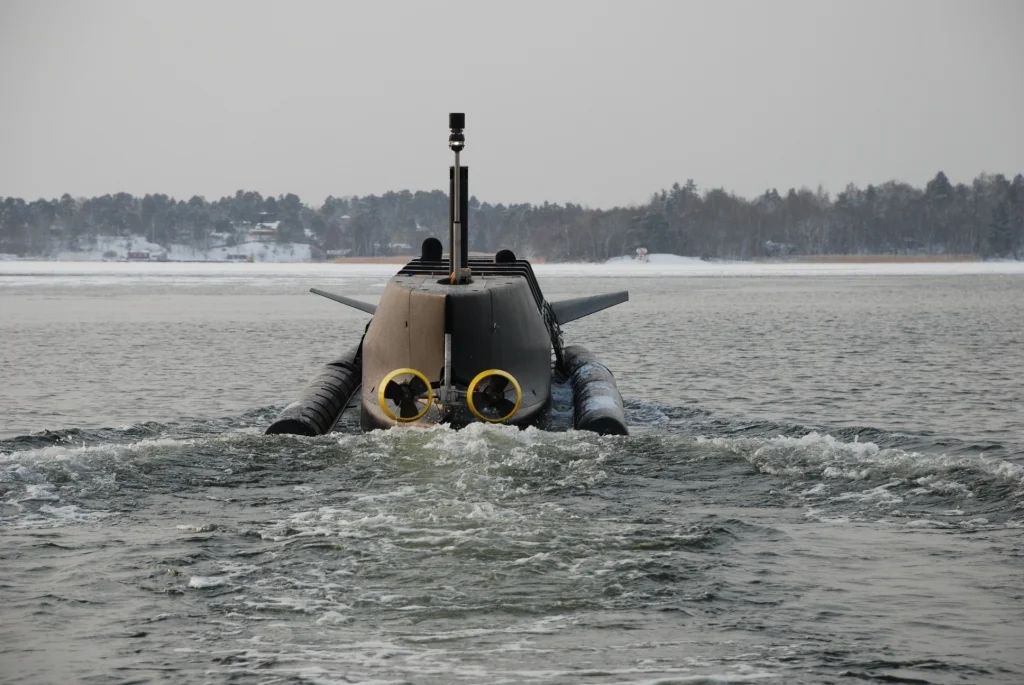Mission approach
The SeaCross user interface is mission oriented. This is utilised using a template approach with which the navigator can switch between different operational modes such as high speed-low-visibility-coastal, landing, planning or open-sea-crossing. All templates are user designed, automatically stored and interchangeable between SeaCross units on board or on shore. The number of definable templates is not limited, and templates are recalled with just a click.
Multiple windows user interface
Each template can consist of one or several PIP windows, where each window can be individually sized, positioned and filled with any combination of the more than 200 inherit functions such as sea charts, radar, trip meters, navigational aids, AIS, echo sounder, sonar, engine data etc. Entire templates or individual windows can be tailored with selectable colour schemes, brightness and selectable instrument data representation.
Multiple / rotating crew support
All templates and settings are automatically stored and recalled on an individual basis. This offers each crew their own settings and templates irrespectively of how crews are rotated or switched between different vessels.
Littoral waters navigation, real time update
With the SeaCross system being specially designed for high speed navigation in littoral waters or open seas, situational awareness and data interpretation are of highest priority. The system offers unique functions dedicated to instantly convey relevant information to the operators.
The system is designed for and used in vessels reaching speeds up to 100 knots offering unparalleled real time update and overall system performance.
Estimated Position Modes
SeaCross® has built-in functionality for EP/DR – Estimated Position / Dead Reckoning navigation (requires compass and log input). When sensor data is lost due to spoofing, jamming or other sensor failures, navigation automatically switches to EP-mode. In EP-mode SeaCross uses the best-available sensor input to calculate vessel position, speed and heading. This can be any combination of hdt, hdg, cog, sog, stw and/or manual operator input. EP-mode can also be activated on operator command.
On shore planning and training
The SeaCross system includes a standard training module that can be executed on any Windows compatible PC. The training module includes all of the SeaCross functionality but in a simulated sensor environment. In addition, the training module serves as a platform tool that can be used for route planning and preparation or Mission Template Design.
Pre / Post mission briefing
While under way all sensor data, including radar and operator interactions, can be recorded to a standard file. The recorded data can be loaded into the SeaCross Log Book program where statistics and route trace(s) can be displayed and printed for debriefing purposes.
A recording can also be replayed (optional), using the training module on board or on shore, for debriefing purposes.
A special standalone simulator is also available as an optional training unit.
Linkage and cross talk
Although SeaCross units are autonomous, any installed unit will automatically communicate with any other unit as available. This Linkage and Crosstalk function allows scale, orientation and cursor pointers to be linked between windows within a display or between physical displays. This facilitates quick image interpretation and target identification. When used between physical displays the navigator can point out objects and targets on the helmsman’s display, and vice versa - keeping crews more alert to their surroundings.
Night vision
All display units are dimmable to complete blackout, and optionally NVIS compatible. In addition, all units have five different colour schemes ranging from day to night according to s52/s57 criteria. Each PIP window can be individually dimmed, offering the navigator a uniform and properly contrasted display for all different types of night time operations.
Redundancy and fall back options
In a SeaCross system there is no master unit. Instead is each SeaCross unit is autonomous and capable of processing and displaying all data provided on the network. A SeaCross unit will work irrespectively of the run time status of any other unit installed on the platform. This design philosophy offers flexibility since units can be swapped both physically and logically at any point in time.
Open standards
SeaCross is built on open standards. As sensor data backbone SeaCross uses any combination of NMEA0183, NMEA2000, CAN-J1939, USB and Ethernet. This allows for future integration and additions of sensors compliant with these standards. Radar antennas are run using the individual manufacturer’s proprietary protocol.
The processor unit runs on a Windows OS accommodating quick and standardised data transfer mechanisms between on board and on shore units.
The open standard and modular design of SeaCross facilitates efficient integration with other systems and technologies, such as the existing integrations with Sea PROTECTOR RWS, The SEAL SDV mini submarine RHIB or radar technologies ranging from Magnetron, Broadband or Doppler Solid State technologies.
Automatic Setup and Diagnostics functionality
The SeaCross system setup module utilizes a self-configuring setup and diagnostics system that automatically identifies connected and supported sensors. Each sensor’s data stream can be examined and tailored. The diagnostics module checks data streams for discrepancies or faults and presents the diagnostics test results in human language.
The SeaCross® system is equipped with an internal self-diagnostic function that continuously monitors the state and status of all connected sensors and notifies the operator on any detected discrepancies.







